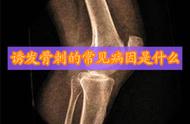
(2)medial surface
筛骨迷路的内侧面构成鼻腔外侧壁(medial surface forms the lateral wall of the nasal cavity)。内侧壁上的结构包括:①上鼻甲和中鼻甲,最上鼻甲;②上鼻道、中鼻道,还有最上鼻道;③钩突、漏斗、筛泡。
- 迷路内表面的两个架子状突起称为上鼻甲和中鼻甲(The two shelf-like projections from the medial surface are called superior and middle conchae)。气化的中鼻甲称为泡状鼻甲(concha bullosa)。注:下甲是一个独立的骨。
- 鼻甲通过“板层(lamella)”附着在筛窦复合体(ethmoid complex)上。中鼻甲板层(middle turbinate lamella)是最复杂、最重要的解剖结构。它有一个S形的附着缘(S-shaped attachment),可以分成三部分(图4.1b)。①前三分之一:位于轴面(axial plane)上,附着于鼻腔外侧壁。②中三分之一:位于冠状面(coronal plane)上,被特别称为“基板(basal lamella)”。③后三分之一:位于轴面(axial plane)上,与纸样板(lamina papyracea)相连,直到腭骨垂直板(perpendicular plate ofthe palatine bone)。
- 鼻甲下方空间称为“鼻道(nasal meatus)”(分别为上、中、下)。①下鼻道(inferior nasal meatus)经鼻泪管(nasolacrimal duct)引流泪囊(Lacrimal sac)。②上和最上鼻道(superior and supreme nasal meatus)引流后筛气房(posterior ethmoid cells)。③中鼻道(middle nasal meatus)引流额窦(frontal sinus)、上颌窦(maxillary sinus)和前筛窦(anterior ethmoid sinuses),这个共同的引流空间被称为“骨道复合体(osteo meatal complex)”。
- 中鼻道(middle nasal meatus)内的主要结构为:①钩突(uncinate process)、②筛泡(ethmoid bulla)和③筛漏斗(ethmoidal infundibulum)。
- 钩突(Uncinate process or Processus uncinatus):从筛骨向后下方延伸的钩状突起(Hooklike process)。是一个薄的,矢状方向的飞镖形骨(boomerang-shaped bone),附着于前方的泪骨和下方的下鼻甲(图4.1a)。最重要的是,它的附着可以根据前筛气房的气化程度而改变。它几乎完全被中鼻甲(middle nasal concha)所掩盖,钩突的后游离缘(posterior unattached margin)形成沟通筛漏斗和中鼻道的半月裂孔(hiatus semilunaris)。
- 筛骨漏斗(ethmoidal infundibulum):为一狭窄的长圆形管,位于中鼻甲下方,钩突和筛泡之间。它是引流额窦、筛前气房和上颌窦的三维空间(three-dimensional space)。①前界——鼻丘气房(aggar nasicells)和额筛气房(frontoethmoidal cells)。②内界——钩突(uncinate process)。③后界——筛泡(bulla ethmoidalis)。④外界——纸样板(lamina papyracea)。

2. 筛窦
(1)筛窦(ethmoid sinuses)是鼻窦中变化最大的,由筛骨气化(pneumatization of the ethmoid bone)发展而来。气化有时可以延伸到筛骨以外,这些气房通常用特定的术语命名:
- 眶上气房(supraorbital cell)——气化到眶骨(orbit bone)
- Haller气房(Haller cell)——气化到上颌窦顶(roof of themaxillary sinus)
- 额筛气房(frontoethmoidal cell)——气化到额窦底(floor of the frontal sinus)
- Onodi气房(Onodi cell)——气化到蝶窦上外侧(superolateralto the sphenoid sinus)
(2)筛窦边界:
- Laterally——纸样板(lamella papyracia)
- Superiorly——前颅底(anterior skull base),筛骨顶向内和后方倾斜。内侧形成筛窦中央凹和筛板。
- Medially——鼻甲的垂直板(vertical lamella of the turbinates):中鼻甲(middle nasal concha)在前,上或最上鼻甲(superior orsupreme nasal concha)在后。
- Posteriorly——筛骨后部与蝶骨融合,蝶窦形成筛窦的后边界。
(3)筛窦被骨间隔(Bony septae)分成多达18个气房。筛窦的气房(air cells)按其位置分为三组。
- anterior ——可多达11个气房(consisting of up to 11 cells)——开口于中鼻道(middle meatus)的半月裂孔(opens in thehiatus semilunaris)。
- middle ——有1-3个气房,通常为3个。(consisting of 1–3, usually three cells)——开口于中鼻道(middle meatus)的筛泡表面(opens on the surface of bull ethmoidalis)。
- posterior ——有1-7个气房(consisting of 1–7 cells)。——开口于上鼻道的后部(posterior part of superior meatus)。

















